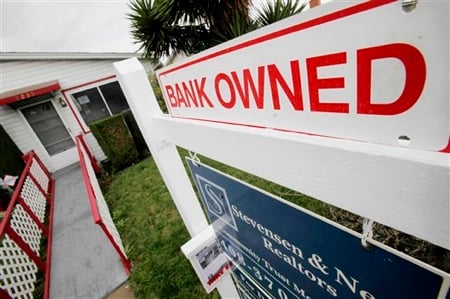The amount of toxic debt held by banks may be declining. But as the closure of four banks over the weekend showed, bad loans are still rippling through the financial system.
Regulators on Friday shuttered banks in Florida, Illinois, Maryland and Utah, boosting to 26 the number of bank failures in the U.S. so far this year following the 140 brought down in 2009 by mounting loan defaults and the recession.
The Federal Deposit Insurance Corp. took over Sun American Bank, based in Boca Raton, Fla., with $535.7 million in assets and $443.5 million in deposits. Also seized were Bank of Illinois of Normal, Ill., with $211.7 million in assets and $198.5 million in deposits; Waterfield Bank in Germantown, Md., with $155.6 million in assets and $156.4 million in deposits; and Centennial Bank in Ogden, Utah, with $215.2 million in assets and $205.1 million in deposits.
First-Citizens Bank & Trust Co., based in Raleigh, N.C., agreed to assume the assets and deposits of Sun American Bank and to share losses with the FDIC on $433 million of the failed bank's loans and other assets. It was First-Citizens' fourth acquisition of assets of a failed bank since last July; the others were First Regional Bank of Los Angeles, Venture Bank of Lacey, Wash., and Temecula Valley Bank of Temecula, Calif.
Heartland Bank and Trust Co., based in Bloomington, Ill., is buying the assets and deposits of Bank of Illinois, and is sharing losses with the FDIC on $166.6 million in loans and other assets.
For Waterfield Bank, because no buyer was found, the FDIC set up a new savings institution that will operate until April 5 to allow customers access to their deposits and give them time to open accounts at other banks.
The FDIC was also unable to find a buyer for Centennial Bank, and it approved the payout of the institution's insured deposits. As a result, checks to the retail depositors for their insured funds will be mailed on Monday. Zions First National Bank in Salt Lake City agreed to accept the failed bank's direct deposits from the federal government, including Social Security and Veterans' payments.
The failure of Sun American Bank is expected to cost the federal deposit insurance fund $103.8 million. The cost of resolving Bank of Illinois is estimated at $53.7 million; that of Waterfield Bank is $51 million; and Centennial Bank is $96.3 million.
The pace of bank seizures this year is likely to accelerate in coming months, FDIC officials have said.
As the economy has weakened, with unemployment rising, home prices tumbling and loan defaults soaring, bank failures have mounted, sapping billions of dollars out of the deposit insurance fund. It fell into the red last year, hitting a $20.9 billion deficit as of Dec. 31.
Banks, meanwhile, have tightened their lending standards. U.S. bank lending last year posted its steepest drop since World War II, as the volume of loans fell $587.3 billion, or 7.5 percent, from 2008, the FDIC reported recently.
President Barack Obama recently promoted a $30 billion plan to provide money to community banks if they boost lending to small businesses. The program, which must be approved by Congress, would use money repaid by banks to the $700 billion federal bailout fund.
But many lawmakers want the $30 billion sent directly to the federal Small Business Administration. It would then decide which businesses should get loans.
The number of banks on the FDIC's confidential "problem" list jumped to 702 in the fourth quarter from 552 three months earlier, even as the industry squeezed out a small profit. Banks earned $914 million, compared with a $37.8 billion loss in the fourth quarter of 2008, at the height of the financial crisis. Still, nearly one in every three banks reported a net loss for the latest quarter.
The 140 bank failures last year were the highest annual tally since 1992, at the height of the savings and loan crisis. They cost the insurance fund more than $30 billion. There were 25 bank failures in 2008 and just three in 2007.
The FDIC expects the cost of resolving failed banks to grow to about $100 billion over the next four years.
The agency mandated last year that banks prepay about $45 billion in premiums, for 2010 through 2012, to replenish the insurance fund.
Depositors' money — insured up to $250,000 per account — is not at risk, with the FDIC backed by the government. Apart from the fund, the FDIC has about $66 billion in cash and securities available in reserve to cover losses at failed banks.







